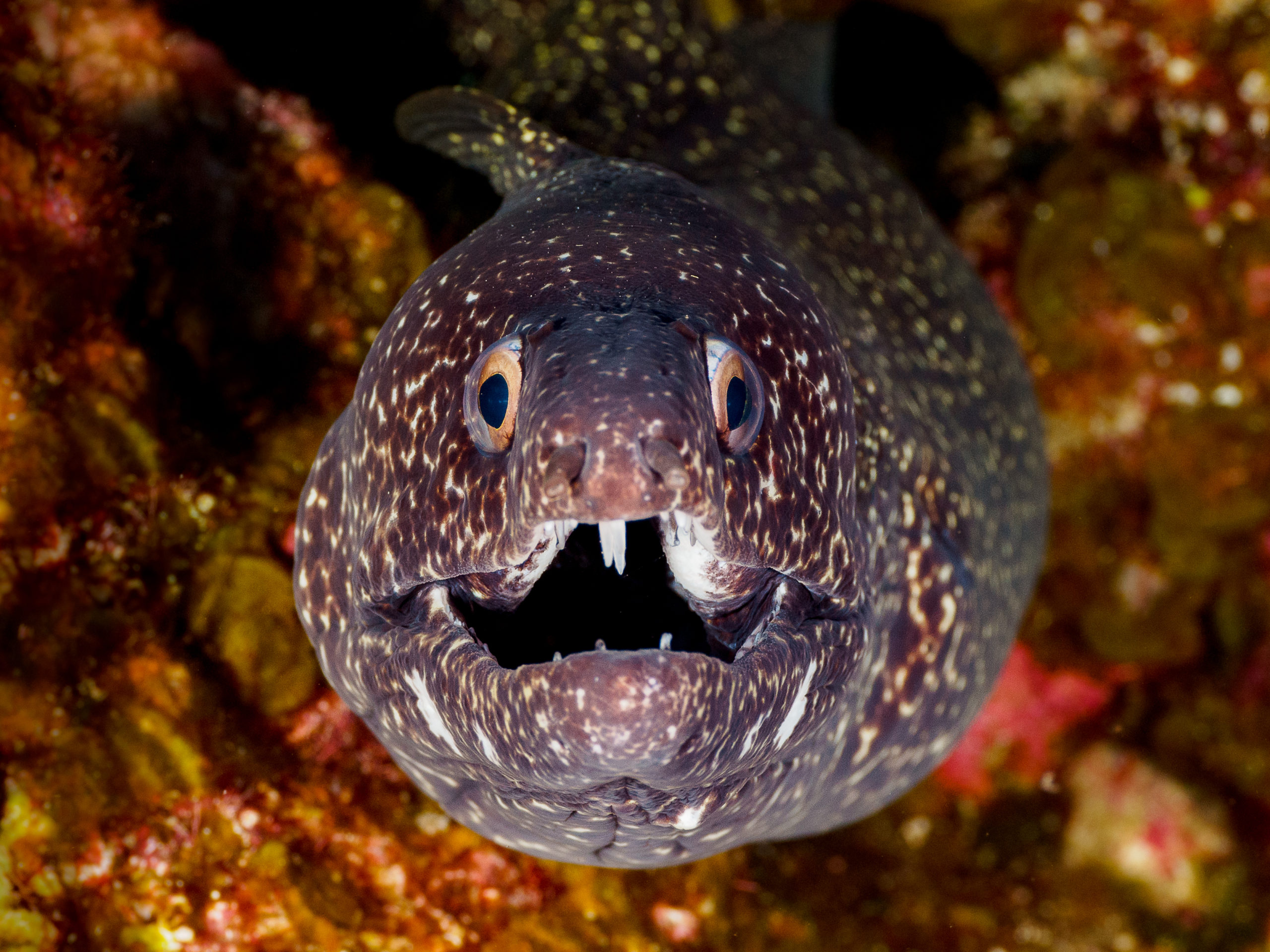
Species in Disguise: Camouflage

A spotted moray eel seen in Flower Garden Banks National Marine Sanctuary. Photo credit: Steve Miller
When we dress up, it could be for an important event, to express our individuality, or to pretend to be someone else to earn candy from our neighbors during the spooky season. Animals of all kinds dress up too, but more for the purposes of survival or mating rituals. Here are some ocean animals that use different camouflage strategies to blend into their environments:
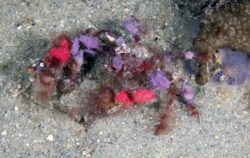
A decorator crab festively decorated with tunicates. Photo credit: Greg McFall
The decorator crab gets creative with items it finds along the seafloor. On the back of its upper shells is a series of sticky, hooked bristles called setae that allow the crab to stick pieces of algae and soft-bodied invertebrates like sponges and anemones onto it. These items help the crab blend into the seafloor and its kelp forest habitat to avoid the gaze of potential predators.
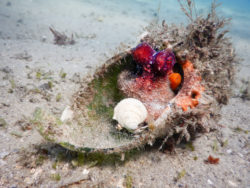
A common octopus gets cozy in the Florida Keys. Photo credit: Tiffany Duong
The common octopus has specialized cells in its skin that allow it to change color and even texture to match its surroundings. This, along with a soft, boneless body allows the common octopus to fit into even the tightest of spots to avoid predators or hide in wait for unsuspecting prey to pass by.
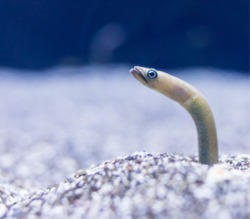
A Hawaiian garden eel peeks out of the sand. Photo credit: Byron Chin
Eels are masters of disguise and use different camouflage strategies to survive. Moray eels are covered in a thick mucus layer that helps them fit and blend into dark and narrow rocky hideouts. Hawaiian garden eels live in sandy burrows and mimic seagrasses by standing upright in the water column and remaining rigid, which allows them to ambush their prey without much effort.
Flounders are flat fishes that blend in with the seafloor. Both of their eyes sit atop their flat bodies, and they bury themselves in sediment to avoid predation or being spotted by potential prey. Their bodies are similar in color to their surroundings, so even if parts of them become exposed, they still blend into the environment.
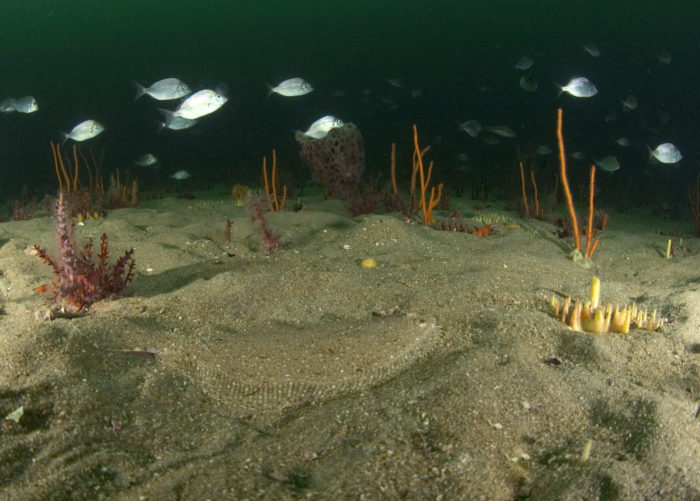
Can you find the flounder in this picture? Photo credit: Greg McFall
